Chevron, Herringbone, Flame Stitch: What’s the Difference?
http://decor-ideas.org 08/07/2014 22:13 Decor Ideas
Chevron, herringbone, flame stitch — they all zig and zag, but which is which? Here you’ll find out how to easily spot the differences among these three popular patterns.
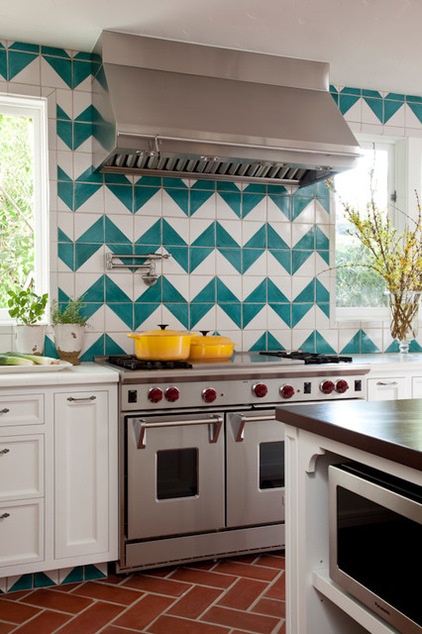
Chevron
This is a zigzag pattern that comes to a sharp point; imagine the letter “V” on repeat. A chevron pattern may be worked into knitwear, printed on fabric or painted on surfaces, such as the tile backsplash shown here.

For chevron floors the wood pieces are cut at an angle and fitted together to form a true point, as seen here. This angle is what identifies chevron floors — herringbone floors, as you will see in a moment, are not cut at an angle.
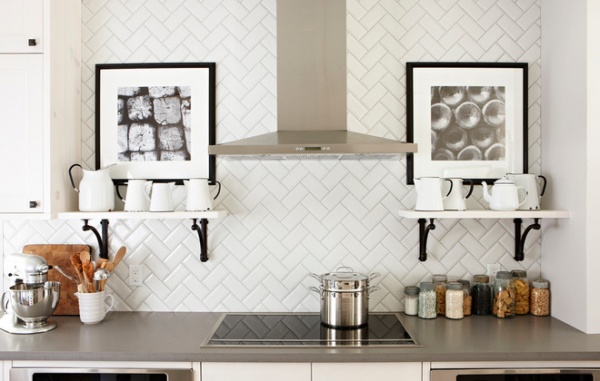
Herringbone
A pattern often confused with chevron, herringbone is created by placing rectangles in a staggered zigzag pattern, as shown here. It is commonly found in tilework and parquet floors. In textiles herringbone most often appears in tweed.
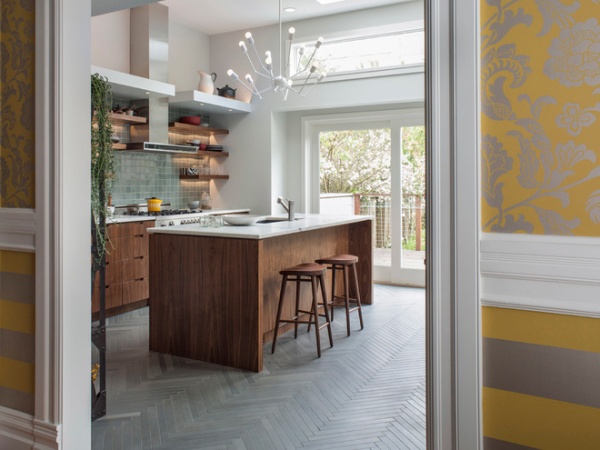
For herringbone floors the wood (or tile, as in this case) is not cut at an angle, but in rectangles that are laid in a broken zigzag pattern. If you look closely, you can see that the pieces of flooring here do not come to a sharp point, as in the chevron floor and backsplash seen previously.
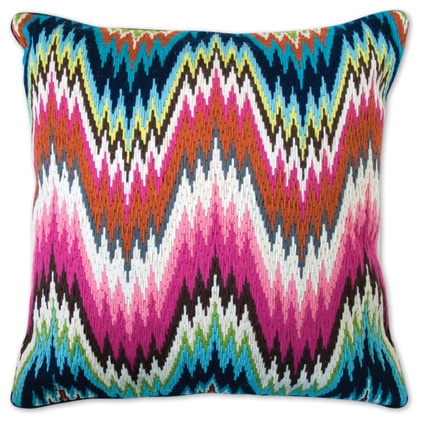
Bargello Worth Avenue Pillow - $175Flame Stitch
This is a zigzag pattern with sharp peaks, usually multicolored, with many gradients (shades) of each hue. Flame stitching originated as one of the common motifs used in bargello needlepoint embroidery, which appeared at least as early as the 17th century in Italy. The pattern is more organic and varied than chevron or herringbone, reminiscent of flames, which is (you guessed it) where the name “flame stitch” comes from.

Other patterns that have similar color variations, but without sharp peaks, fall under the larger umbrella of bargello, which is the name of the traditional needlepoint technique used to create the flame stitch.

The Italian design house Missoni is well known for its updated takes on flame stitch–style patterns, like on the colorful rug shown here.
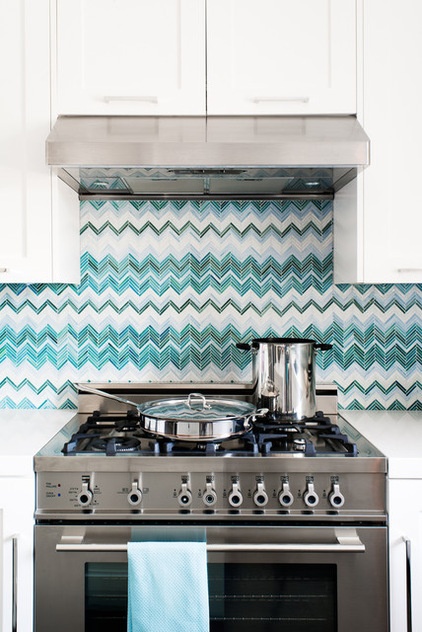
When things get tricky. Sometimes identifying a pattern is not easy. Take the tile backsplash shown here, for instance — at first glance it looks like chevron, right? But if you look more closely, you will see that the tile is arranged in a herringbone pattern (rectangles, not points). So it’s definitely herringbone … but the color variation is inspired by flame stitch!
Tell us: Chevron, herringbone, or flame stitch — which do you prefer?
More: Flame Stitch Patterns Fire Up Home Design
Related Articles Recommended












